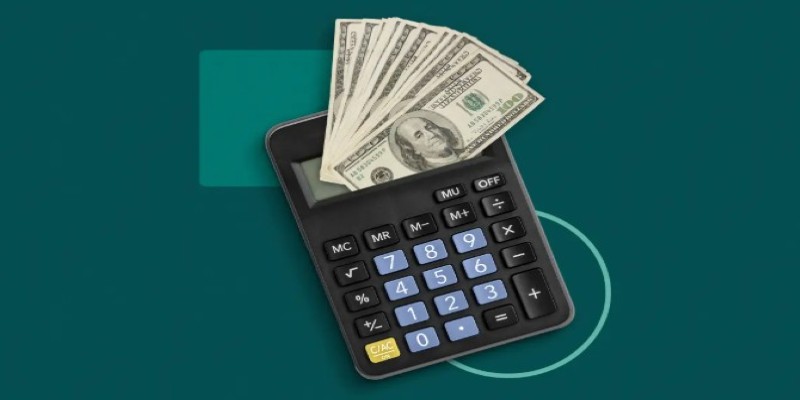Advertisement
A savings account allows your money to grow slowly while remaining safe and easily accessible. But many people overlook how the interest is actually calculated on their balance. Understanding the math behind your savings account interest helps you plan better and set realistic goals for your money. The process isn’t complicated once you break it down into clear steps. This article explains how banks figure out the interest you earn, the difference between simple and compound interest, and how your balance and time affect what you end up with. Let’s make sense of it step by step.
Savings accounts earn interest because you’re letting the bank use your deposits. In exchange, the bank pays you a percentage of your balance over time. This percentage is called the annual percentage yield, or APY, which already takes compounding into account. It’s helpful to understand the rate itself, the balance it’s applied to, and the time frame it covers.
Most banks express the rate in annual terms, but interest is usually calculated daily and added to your account monthly. The formula for simple interest is straightforward:
Interest = Principal × Rate × Time
Here, the principal is your balance, the rate is the annual interest rate (written as a decimal), and time is measured in years. For example, if you keep $5,000 in a savings account at 2% interest for one year, the calculation would be:
$5,000 × 0.02 × 1 = $100
That $100 is what you would earn with simple interest over a year. However, most savings accounts don’t stop there — they use compounding to add interest not only on your deposit but also on the interest already earned.

Most banks calculate interest daily and pay it monthly, which means your balance grows a little faster because of compounding. Every day, the bank calculates interest based on your current balance, including any interest already added. Over time, this makes a noticeable difference compared to simple interest.
The formula for compound interest looks like this:
A = P × (1 + r/n)^(n×t)
Where:
Suppose you have $10,000 in a savings account at 3% APY, compounded monthly (12 times a year). After one year:
A = 10,000 × (1 + 0.03/12)^(12×1) = $10,304.16
That means you earn about $304.16 in interest that year instead of just $300 with simple interest. The difference grows larger as your balance grows or if you leave your money in the account longer.
Compounding frequency matters as well. Daily compounding earns slightly more than monthly compounding, though the difference isn’t dramatic over short periods. Checking your account’s compounding method helps you estimate your earnings more accurately.
Several factors influence the actual interest rate your savings account earns. The first is your account’s APY. Rates vary from bank to bank and even among accounts at the same bank. Online banks tend to offer higher APYs than traditional branches because of their lower operating costs.
Your balance is another key factor. Since interest is calculated on your balance, larger deposits generate more interest. Some accounts have tiered rates, meaning higher balances earn higher rates, so it can pay to keep more money in one account rather than spreading it thinly across several.
The length of time your money stays in the account also matters. Since interest is calculated over time and compounded, leaving your balance untouched allows compounding to work in your favor. Withdrawing funds mid-month can lower your average daily balance and reduce your interest for that period.
Lastly, the compounding frequency makes a subtle difference. Daily compounding slightly outpaces monthly compounding, as interest is added to your balance more frequently. Over the years, this effect has become more noticeable.

You can calculate your expected interest earnings using the formulas above or by using online savings calculators. To get a close estimate:
For example, if you have $15,000 in an account with a 2.5% APY:
Keep in mind that APY assumes you leave the money untouched for the full year. Adding deposits or making withdrawals changes your average balance and, therefore, your actual interest earned. Banks usually calculate based on your average daily balance and then credit the earned interest at the end of the month.
Reading your account statements carefully can help you see exactly how the bank calculates and applies interest. If you’re comparing different accounts, pay attention to both the APY and the compounding method.
Knowing how to calculate savings account interest gives you a clearer view of how your money grows over time. The process depends on your balance, the interest rate, how often the interest compounds, and how long you leave your funds untouched. Simple interest gives you a basic idea, but compounding shows the real benefit of saving consistently. While the calculations might seem technical at first, breaking them down step by step shows how manageable they are. With this understanding, you can better compare accounts and make informed choices that suit your savings goals.
Advertisement

How breed influences pet insurance costs and why some pets are more expensive to cover. Understand breed-specific health risks and make informed choices for your pet’s care

Discover 11 scenic and stress-free day trips from Rome, from lakes and spas to hill towns and beach escapes.

Enjoy a relaxing Ibiza trip away from the party scene, with beaches, nature, and local spots.

Compare Amsterdam’s Rijksmuseum and Van Gogh Museum based on layout, vibe, visitor experience, and artistic focus.

How to deposit cash into someone else’s account using safe and approved methods. This guide covers shared accounts, ATMs, and money order options for secure transactions

Explore the best day trips from San Francisco with this detailed guide. Discover coastal views, redwood forests, and charming small towns perfect for quick escapes

Plan Glacier National Park visit with tips on permits, trails, shuttles, lodging, gear essentials, and wildlife safety.

Use this helpful guide to explore Louisville, Kentucky using public transport and walking.

How to calculate savings account interest with clear, simple steps. Understand how your balance, rate, and compounding affect your earnings, and use a savings interest calculator for quick estimates

Discover Los Angeles through its best neighborhoods, filled with culture, food, art, and unique stories.

Experience the vibrant art scene in Miami through museums, galleries, street murals, and studios.

Discover the top 12 things to do in Honolulu, from scenic hikes to markets, coastal walks, and tropical garden visits.